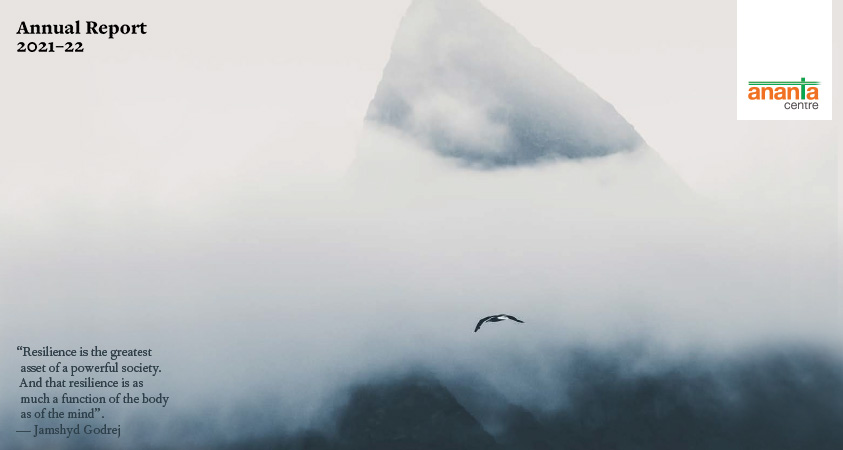Growth worries persist, but where are the green shoots?
Managers of the Indian economy so far have had no respite from worries over an economic slowdown. On November 29, the Central Statistics Office released the gross domestic product (GDP) numbers for July-September 2019, which placed growth at 4.5 per cent, a six-year low. Coming on top of consecutive deceleration in growth every quarter since January-December 2018, when it was estimated at 8.1 per cent, the latest GDP growth print suggested that it took barely a year and a half for the Indian economy to record a near-halving of its growth rate. Adding fuel to fire was the Reserve Bank of India’s projection for 2019-20 growth, released on December 5. The RBI, too, brought down its GDP growth estimate for the current year to 5 per cent, down steeply from the earlier estimate of 6.1 per cent. Keeping company with the RBI were a host of international rating agencies, which also projected a sharp downturn in India’s GDP growth rate – 4.9 per cent by Moody’s, 4.6 per cent by Fitch and 5.1 per cent by Standard and Poor’s. Even the Asian Development Bank cut India’s growth projection to 5.1 per cent for 2019-20. The only outlier was the International Monetary Fund, which pegged the growth rate for the current year at 6.1 per cent. Given the fact that in the first half of 2019-20, GDP growth was 4.75 per cent, the full year’s figure could be closer to what the RBI has projected.
Yet, a recovery, although very slow, cannot be ruled out in the second half of the current year and more prominently during 2020-21. There are some indicators that things might get better in the coming months. But these are early signals and it is not clear if the trend would be maintained. Nevertheless, it is worth reviewing them to get an overall sense of the Indian economy.
One, the RBI has noted that the Indian corporate sector’s capital expenditure (capex) cycle may be turning up. According to its December monetary policy review assessment, unaudited results of 1,599 listed private manufacturing companies showed that they had mobilised funds, including their savings possibly on account of the lower corporation tax rates, for use in creating fixed assets and reducing borrowings. The RBI’s observations are significant: “These companies were investing in financial instruments such as investment and loans and advances during the last couple of years in the face of subdued demand. This shift to investment to fixed assets under the head ‘capital work in progress’ in H1 2019-20 appears to be broad based and even after excluding a few large companies from the sample, the preference for fixed assets is noticeable. Furthermore, pipeline projects sanctioned by banks/financial institutions in the preceding years envisage an expansion in capex spending for the year 2019-20. While these developments are still tentative, they would need to be carefully monitored with incoming data to look out for a durable revival in the capex cycle.”
Two, the national income figures for both the quarters of April-June and July-September 2019 for agriculture, forestry and fishing reveal a new trend that may well bring in some good news for the rural economy’s buying power in the coming quarters. For the first time since the October-December 2017 quarter, the gross value added (GVA) growth rates at current prices have been higher by more than 5 percentage points, compared to the GVA growth rates at constant prices. For instance, in April-June 2019, GVA for agriculture was just 2 per cent at constant prices, but 7.9 per cent at current prices. Similarly, GVA for agriculture in July-September 2019 was 2.1 per cent at constant prices, but 7.4 per cent at current prices. The big question is how soon the inflation-led higher GVA at current prices for these two quarters would result in higher disposable income for farmers in particular and the rural economy in general. Once that happens, there is a likelihood of rural demand reviving and giving the much-needed consumption push to the Indian economy.
Three, collections of goods and services tax (GST) during the year have remained well below the targeted rate as given in the Budget. But for three consecutive months now, GST collections have seen a steady rise from Rs 92,000 crore in September to Rs 95,000 crore in October and to Rs 1.03 trillion in November. There is no doubt that the government is facing a significant shortfall in GST collections during the current year and even meeting the states’ demand for compensation would pose a difficult challenge. But the GST collections in the last three months show a welcome trend. If this trend is maintained, the economy may will be reflecting a revival in the pace of consumption.
No respite from falling trade
Developments on the foreign trade front, however, brought no cheer for the economy in December. For the fourth successive month in the current financial year, merchandise goods exports at $26 billion in November 2019 contracted by 0.34 per cent. During the first eight months of 2019-20, exports registered a decline of 2 per cent, compared to the same months of 2018-19. Imports at $38 billion too contracted, but by a higher margin of 13 per cent, causing a bigger concern for economic growth. The April-November 2019 imports decline was by 9 per cent. The double-digit decline in November was not just because of lower oil imports, thanks to a decline in international crude oil prices. Even non-oil imports had declined in November by 10 per cent, slightly higher than the 7 per cent cumulative decline in the April-November period.
This does not augur well for economic growth in the coming months, even though India’s merchandise trade deficit in November declined to $12 billion, down 31 per cent. Thanks to India’s services trade surplus of $53 billion in April-November 2019, the country’s overall trade deficit, however, declined to $54 billion, down 34 per cent from $84 billion in the same period of 2018, which should help manage the country’s balance of payments.
Budget challenges become more complex
Even as Finance Minister Nirmala Sitharaman prepares to present her second Budget on February 1, the numbers on the government’s finances during 2019-20 present a fresh set of challenges. The data, released by the Controller General of Accounts, show that the gross tax revenues of the Union government during the first seven months of the year (April-October 2019) grew by just 1.2 per cent, compared to the annual target of about 18 per cent. Meeting the tax revenue shortfall in the remaining months of the year will be extremely difficult. Efforts to increase mobilisation of non-tax revenues including those from disinvestment and strategic sale of government equity in public sector undertakings (PSU) may help, provided the uncertainty over the sale of the state-controlled oil major, BPCL, comes to an end soon. The one-off transfer of surplus reserves from the RBI, about Rs 58,000 crore, and an estimated additional receipt of court-mandated spectrum fees from telecom companies, of about Rs 72,000 crore, will certainly prove to be handy. Similarly, a cut in expenditure or seeking greater recourse to extra-Budget borrowings may also become unavoidable options for the government to bring the deficit down to as close to the target figure as possible.
But can these be enough to help the government meet its fiscal deficit target of 3.3 per cent of GDP in the current year? That target now seems unattainable. Given the manner in which the RBI has decided to launch its own variety of Operation Twist (which essentially envisages the RBI purchasing 10-year government paper and selling the same day an equivalent amount of short-term government paper), the ground has been prepared for a fresh round of government borrowing from the market to meet the fiscal deficit that has already widened. Operation Twist helps bring down the yield of long-term paper even as the short-term paper yield goes up.
A bigger question is whether the finance minister is giving her fiscal consolidation programme next year a pause to facilitate a big push to expenditure on schemes and infrastructure projects that help create demand in the economy? Will it just rely on the India Infrastructure Finance Company Limited (IIFCL) to provide more funds for infrastructure projects? After all, on December 11, the Union Cabinet provided additional equity support of Rs 5,300 crore to IIFCL, a wholly-owned central government company set up in 2006 to provide long-term finance to infrastructure projects. The expectation is that with more equity, IIFCL would be able to borrow more and finance more big-ticket infrastructure projects. Will the Budget for next year walk this path again and provide more equity for IIFCL? Watch this space!
Implications of extended term for 15th Finance Commission
The government’s decision to give a year’s extension to the term of the Fifteenth Finance Commission and expand the scope of its recommendations will have both an immediate impact on the next Budget as also on the medium-term flow of tax revenues to the states under the new devolution formula. In July 2019, the Modi government decided to extend the term of the Commission just by a month – from October 31 to November 30, 2019. The order on extension also mandated the Commission to suggest ways for allocation of non-lapsable funds for defence and internal security. An official statement had explained: “Under the Terms of Reference of the Commission, it is proposed to ensure an assured allocation of resources towards defence and internal security imperatives. The amendment provides that the 15th Finance Commission shall also examine whether a separate mechanism for funding of defence and internal security ought to be set up and if so how such a mechanism could be operationalised.”
Nobody as yet has a clue on how the new mechanism for funding of defence and internal security will be created as per the recommendations of the Fifteenth Finance Commission. But states are apprehensive if the new mechanism results in a reduction in the size of the divisible pool of central taxes. There are fears that the Commission may sequester an amount, equivalent to a part of the Centre’s total expenditure on defence and internal security, and deduct it from the total pool of central taxes, which are to be shared and divided among the states. If that happens, the fiscal situation will get worse for states, which are already struggling with lower revenues on account of the goods and services tax.
But just three days before the Fifteenth Finance Commission had to submit its recommendations before the extended date of November 30, 2019, the Modi government came out with another order. It mandated the Commission to submit a report of its recommendations for 2020-21 by November 30, 2019 and for the next five years from 2021-26 by October 30, 2020.
Subsequently, the Commission Chairman, N.K. Singh, along with other members, presented to the President a report for 2020-21. Details of the report are not known and are likely to be made public only after the presentation of the Budget on February 1. Many of the recommendations in that report, including perhaps those pertaining to the mechanism for funding of defence and internal security, may be incorporated in the Budget.
Another implication of the November 27 decision to extend the term of the Fifteenth Finance Commission is that its recommendations would now be enforced for a total period of six years. Normally, recommendations of most finance commissions are operational for five years. Only a couple of the finance commissions – the third and the fourth – were operational for four years, and only one – the ninth finance commission – was enforced for six years – from 1989 to 1995. That Commission, headed by NKP Salve, also had submitted two reports – one for just a year and the other for five years. The Commission, now headed by NK Singh, too will submit two reports, whose recommendations will be operational for a total period of six years.
A new phase for Government-industry engagement
The quality of engagement between the government and industry appears to have undergone a significant change in the last few weeks. It all began with a bold statement by veteran business leader, Rahul Bajaj, at a function held in Mumbai in the last week of November. In the presence of top BJP leaders, including Home Minister Amit Shah, Bajaj said that industry leaders did not have the confidence to criticise the government unlike in the past. Shah responded by trying to dispel that impression, but he also said that if that was the impression, there was need to address it. A few weeks later, at an industry association meeting, Prime Minister Narendra Modi said that industry leaders were not adequately appreciative of the reforms and measures that his government had undertaken. He even referred to the changes in the companies laws and the reduction in the corporation tax rates and wondered why the industry leaders’ applause was not loud enough. Finance Minister Nirmala Sitharaman used a similar forum to tell industry that it should not be afraid of investing more in the country and not suffer from any self-doubts. Commerce and Industry Minister Piyush Goyal told industry leaders to apprise the government of any specific cases where a country had imposed unfair non-tariff restrictions on their market access to its markets, so that the Indian government could explore adopting retaliatory measures. Clearly, an open exchange of views and comments between industry and government leaders is taking place. Whether that results in a new and a more mutually beneficial relationship or a new compact for an industry-government engagement, only time will tell.
Organisational restructuring at Indian Railways
The government’s decision to restructure the Railway Board and merge the eight existing railway officers’ services into one omnibus service is one of the biggest moves in its personnel management in recent months. The size of the Railway Board has been pruned, with only four representatives from the Indian Railways and a few other independent experts. The Railway Board chairman will be re-designated as the CEO. And instead of eight different railway officers’ services, there will now be only one service – the Indian Railways Management Service, a move that is expected to break the menace of departmentalism in the Indian Railways. More than 8,000 railway officers will be impacted by this decision. There is as yet no clarity on the timeline for the implementation of these decisions. But there is little doubt that the latest move has created a few more tough challenges for the Indian Railways, troubled as it is already by slowing freight revenues, worsening finances and delayed implementation of projects.
Data reforms see a ray of hope
In a decision that is likely to revive faith in India’s economic data, the government has set up a 28-member committee to review key data sets that capture economic activity and labour force participation trends in the economy. To be headed by former chief statistician, Pronab Sen, the committee will have representation from different bodies like the United Nations, the RBI, the finance ministry, NITI Aayog, educational institutions and industry chambers. That such a committee has been set up is a welcome step at a time when serious questions and doubts have been raised about the integrity of India’s economic data and the methodologies used in preparing them. The government in the past has either doubted some of the economic data sets or has made no effort to strengthen the way such data are collected. The setting up of the committee shows the government has at last responded to the need for reviving faith in India’s data collection by introducing reforms and improvements in the country’s statistics architecture.
























